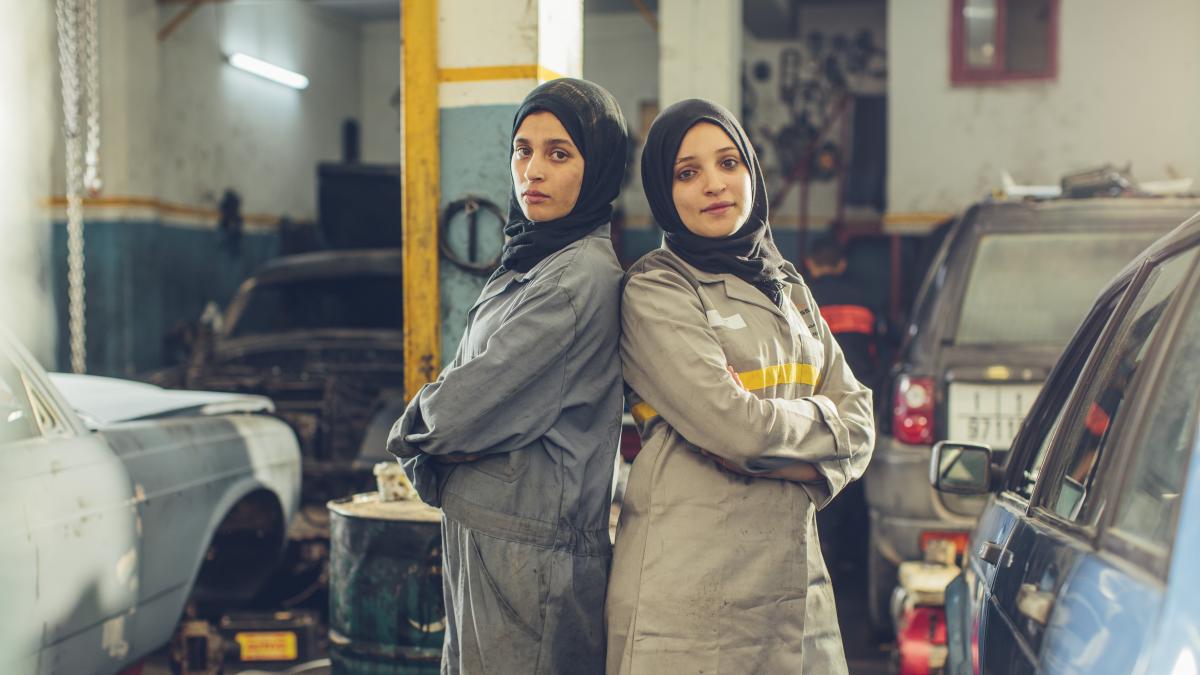
The United States advances SDG 5 through the first-ever U.S. National Strategy on Gender Equity and Equality, which also serves as an umbrella framework to tie together related U.S. gender equality policy priorities.
Bobby Neptune for USAID
Achieve gender equality and empower all women and girls
Ever since she was a little girl, Najlae (pictured left alongside her sister Rajae) was fascinated by cars and motorbikes. She loved disassembling car parts and putting them back together. Though mechanics has always been her passion, Najlae thought it was a field reserved for boys.
The sisters were studying nursing when they found out about a USAID-supported project providing youth with valuable skills training to help them break into the job market. There are nearly 10 million young people in Morocco, and youth make up nearly 80% of the unemployed population.
After hearing that mechanics was one of the offered programs, the sisters jumped at the opportunity. For the first time in their lives, their dream to become auto mechanics didn’t feel so impossible. Najlae and Rajae were the only women in their program, but they refused to back down.
Najlae and Rajae talked about dreams of opening their own workshop one day and calling it “Princess Auto.” They would like it to have an inviting, feminine design and offer services that cater to women drivers. They also want to teach women simple fixes, like changing a tire.
Achieving gender equality is a prerequisite and accelerator to achieving each SDG. When women and girls are able to participate fully in their communities, extraordinary progress is unleashed, which is what the world is demanding now. USAID is committed to being a leading investor, partner, and advocate to achieve this goal across societies.
